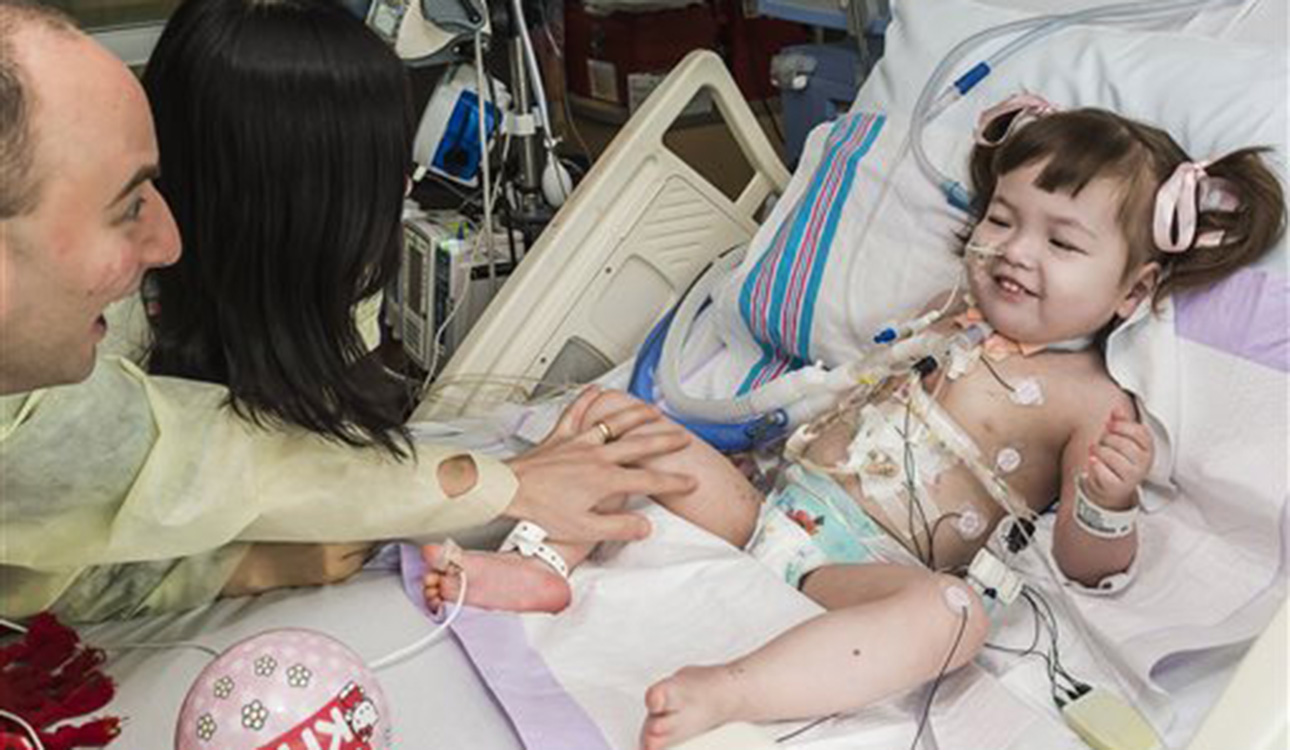

Associated Press
CHICAGO — A 2-year-old girl born without a windpipe now has a new one grown from her own stem cells, the youngest patient in the world to benefit from the experimental treatment.
Hannah Warren has been unable to breathe, eat, drink or swallow on her own since she was born in South Korea in 2010. Until the operation at a central Illinois hospital, she had spent her entire life in a hospital in Seoul. Doctors there told her parents there was no hope and they expected her to die.
The stem cells came from Hannah’s bone marrow, extracted with a special needle inserted into her hip bone. They were seeded in a lab onto a plastic scaffold, where it took less than a week for them to multiply and create a new windpipe.
About the size of a 3-inch tube of penne pasta, it was implanted April 9 in a nine-hour procedure.
Early signs indicate the windpipe is working, Hannah’s doctors announced Tuesday, although she is still on a ventilator. They believe she will eventually be able to live at home and lead a normal life.
“We feel like she’s reborn,” said Hannah’s father, Darryl Warren.
“They hope that she can do everything that a normal child can do but it’s going to take time. This is a brand new road that all of us are on,” he said in a telephone interview. “This is her only chance but she’s got a fantastic one and an unbelievable one.”
Warren choked up and his wife, Lee Young-mi, was teary-eyed at a hospital news conference Tuesday. Hannah did not attend because she is still recovering from the surgery. She developed an infection after the operation but now is acting like a healthy 2-year-old, her doctors said.
Warren said he hopes the family can bring Hannah home for the first time in a month or so. Hannah turns 3 in August.
“It’s going to be amazing for us to finally be together as a family of four,” he said. The couple has an older daughter.
Only about one in 50,000 children worldwide are born with the windpipe defect. The stem-cell technique has been used to make other body parts besides windpipes and holds promise for treating other birth defects and childhood diseases, her doctors said.
The operation brought together an Italian surgeon based in Sweden who pioneered the technique, a pediatric surgeon at Children’s Hospital of Illinois in Peoria who met Hannah’s family while on a business trip to South Korea, and Hannah — born to a Newfoundland man and Korean woman who married after he moved to that country to teach English.
Hannah’s parents had read about Dr. Paolo Macchiarini’s success using stem-cell based tracheas but couldn’t afford to pay for the operation at his center, the Karolinska Institute in Stockholm. So Dr. Mark Holterman helped the family arrange to have the procedure at his Peoria hospital, bringing in Macchiarini to lead the operation. Children’s Hospital waived the cost, likely hundreds of thousands of dollars, Holterman said.
Part of OSF Saint Francis Medical Center, the Roman Catholic hospital considers the operation part of their mission to provide charity care, but also views it as a way to champion a type of stem-cell therapy that doesn’t involve human embryos, the surgeons said. The Catholic church opposes using stem cells derived from human embryos in research or treatment.
Macchiarini has been involved in 14 previous windpipe operations using patients’ own stem cells — five using man-made scaffolds like Hannah’s but in adults; and nine using scaffolds made from cadaver windpipes, including one in a 10-year-old British boy.
He said only one patient died, a 30-year-old man from Abingdon, Md., who had the operation in November 2011 to treat late-stage cancer of the windpipe. He died about four months later of uncertain causes, Macchiarini said.
Similar methods have been used to grow bladders, urethras and last year a girl in Sweden got a lab-made vein using her own stem cells and a cadaver vein.
Scientists hope to eventually use the method to create solid organs, including kidneys and livers, said Dr. Anthony Atala, director of Wake Forest University’s Institute for Regenerative Medicine.





